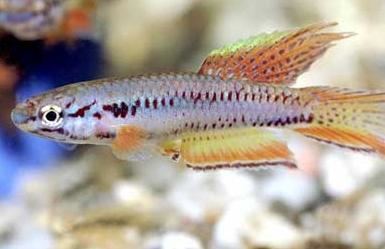Rank Species | Phylum Chordata | |
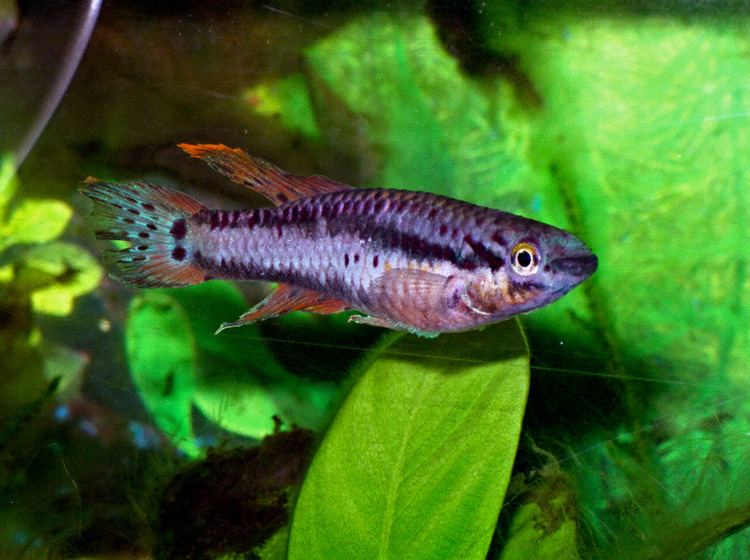 | ||
Similar Aphyosemion, Aphyosemion australe, Fundulopanchax, Blue lyretail, Epiplatys | ||
Chromoaphyosemion bivittatum funge
Aphyosemion bivittatum (twostripe lyretail, two-banded killi, red lyretail) is a species of freshwater fish belonging to the Aplocheilidae family. It is found in rivers in southeastern Nigeria and southwestern Cameroon. It was originally described as Fundulus bivittatus by Swedish zoologist Einar Lönnberg in 1895. The holotype was discovered near a waterfall in the Ndian River in Cameroon and currently is located in the Stockholm Museum.
Contents
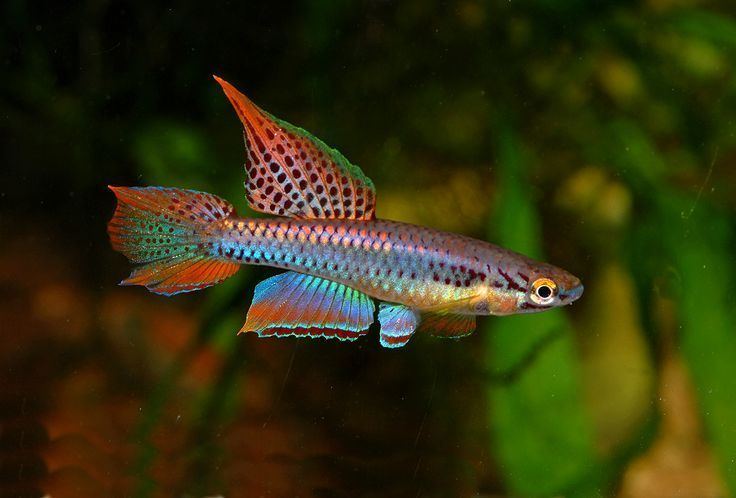
Killifish aphyosemion bivittatum
Appearance
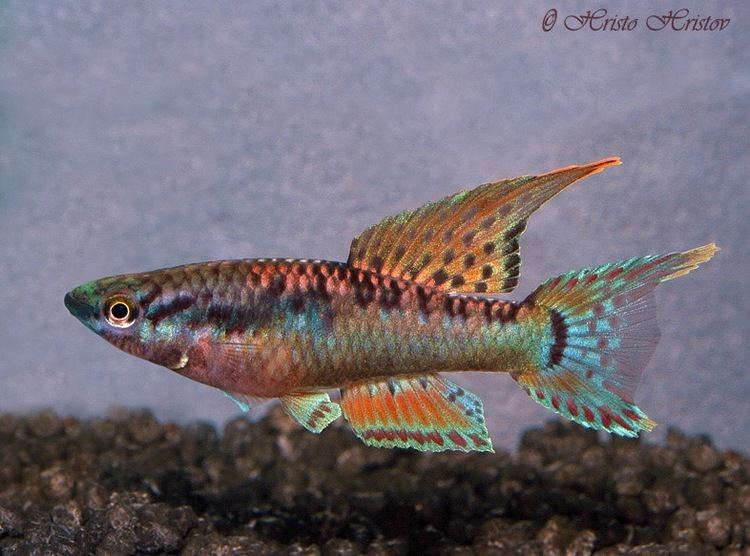
A. bivittatum has an elongated, brightly-coloured body with two dark bands made up of red spots running along each side, with the colors varying between populations. Individual males are commonly found with golden-brown dorsal surfaces, bluish sides, and golden ventral surfaces. The males have a maximum body length of approximately 5 centimetres (2.0 in) and have brightly-marked, tall and pointed anal and dorsal fins that are yellow to pastel green with red edges. The caudal and dorsal fins are green with red spots and bright yellow tips. It has 10–13 spines in its dorsal fin and 12–15 in its anal fin.
Habitat

The species is found in small calcium rich steams in the coastal rainforests of southeastern Nigeria and southwestern Cameroon. They are benthopelagic, meaning they float just above the riverbed. They prefer water with a pH of 6 to 6.5 and temperature of 22 to 24 °C (72 to 75 °F).
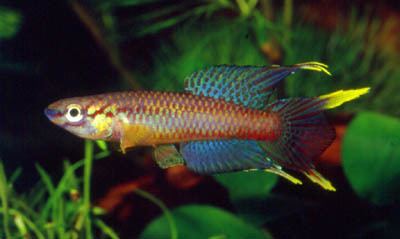
A bivittatum has only been observed in five locations and it is thought that they are present in no more than ten. This, along with the threat to their habitat from deforestation, has led them to be classified as vulnerable.
